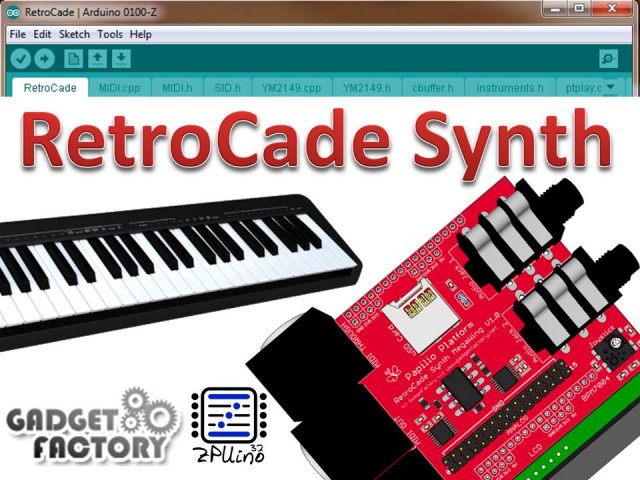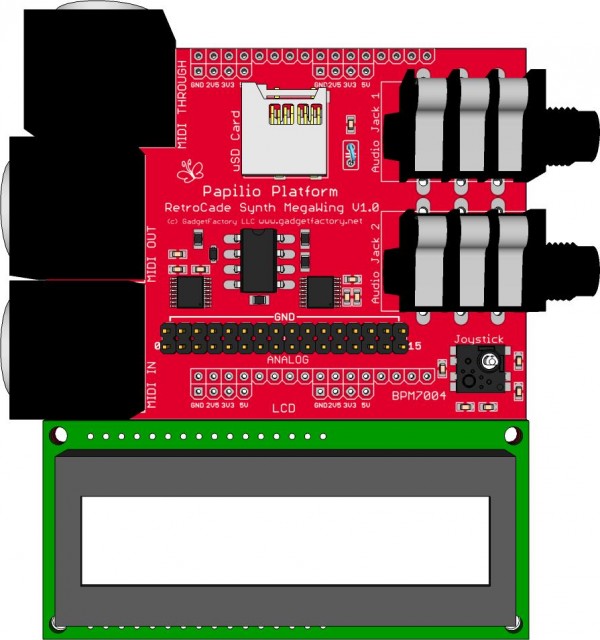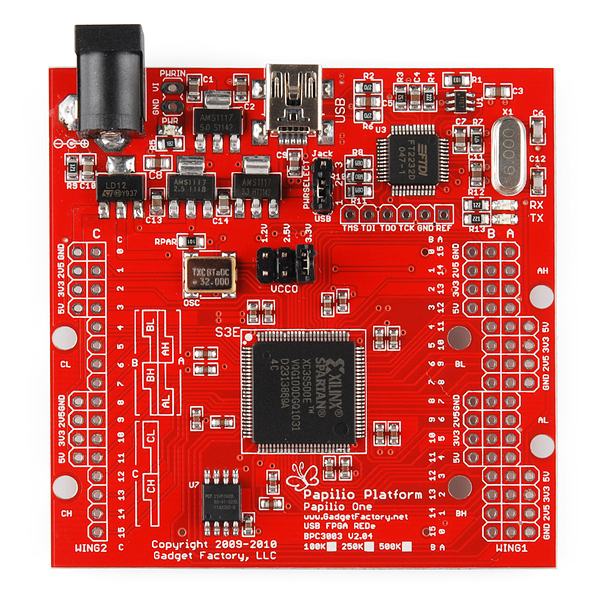You know in sci-fi how you’ll see robots and other machines that can transform, re-program themselves on the fly for a new task? (Okay, sometimes they’re evil robots.) Well, imagine a single-board – looking a bit like an ultra-compact computer – that does that for sound, and you have the basic notion of the RetroCade Synth. For lovers of classic computer audio chips, and chip music associated with gaming and the demo scene, it means a single device that can be all those vintage sounds from the moment you switch it on. You can even leave the computer at home.
The magic here is all via something called a “field-programmable gate array,” or FPGA. Normally, when you create a circuit, you can’t really change it after the fact – not without a soldering iron and a steady hand, anyway. The FPGA is different; it uses basic logical building blocks that can be reprogrammed at will after you’ve shipped it.The RetroCade Synth is open source hardware – perhaps the first high-visibility project to use an FPGA for sound. (See the awesome MilkyMist for an example of a FPGA-based, open source hardware for video; the MilkyMist uses these features to add more video-processing techniques as the project develops, and has inspired other projects well beyond video or music.)
Hackers will love this, of course. But even if you know nothing of how these boards work, the RetroCade Synth is looking like a useful musical tool. A Kickstarter project is being used to fund production. Note that this differs from projects that use Kickstarter to fund development; by funding production of a complete or nearly-complete design, Kickstarter can help designers jump over the hurdle of the initial capital needed to manufacture something their users want. The Kickstarter model is suited to this scenario, as it was designed as a kind of “preorder” system in some of its first applications.
What the RetroCade provides:
- Emulation of Commodore 64 SID, Atari ST’s Yamaha YM-2149, Amiga MOD, and more. Use as an instrument or play MIDI or .mod files composed for these architectures.
- Control from a custom VST front-end.
- Specs: Papilio FPGA + Xilinx Spartan FPGA (Spartan 3E 500K or Spartan 6 LX9)
- Audio and MIDI onboard, SD card for loading files.
- Built-in MicroJoystick and LCD display.
- Analog and digital inputs for adding physical controls (sliders, knobs, and the like).
- Software for control built in SynthMaker so it can be easily modified.
(Those computer control features are just extras; you can use the hardware.)
The funding will complete documentation and the first prototype and production runs. Beyond that, extra funding will pay for time of the developers to do more. That could include other chips based on open source implementations. (See more details on the site of their grander schemes.)
Open source hardware also made the collaborations possible that would allow musicians to delve into such an ambitious project. “Standing on the shoulders of giants,” that includes building on implementations of specific chips for FPGA, as well as other important hardware developments. See the technical video for more of the technical goodness in there.
Modification isn’t for the feint of heart – if you don’t know what the acronym “VDHL” means, for instance, you’re probably not going to be that interested. But it’s nice to know that stuff is open, perhaps not so much for the music community per se as other engineers working with these sorts of platforms.


